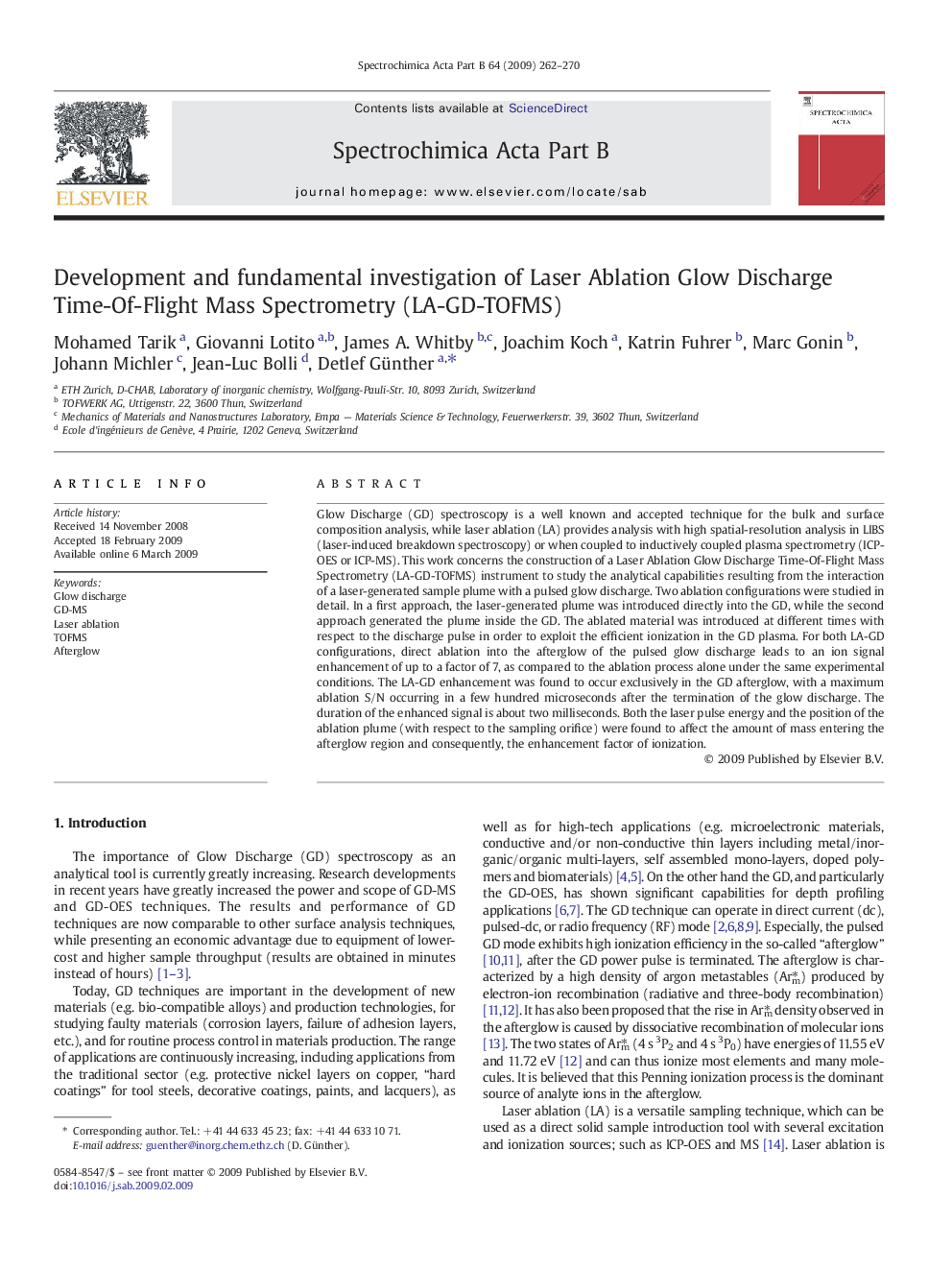| Article ID | Journal | Published Year | Pages | File Type |
|---|---|---|---|---|
| 1240479 | Spectrochimica Acta Part B: Atomic Spectroscopy | 2009 | 9 Pages |
Glow Discharge (GD) spectroscopy is a well known and accepted technique for the bulk and surface composition analysis, while laser ablation (LA) provides analysis with high spatial-resolution analysis in LIBS (laser-induced breakdown spectroscopy) or when coupled to inductively coupled plasma spectrometry (ICP-OES or ICP-MS). This work concerns the construction of a Laser Ablation Glow Discharge Time-Of-Flight Mass Spectrometry (LA-GD-TOFMS) instrument to study the analytical capabilities resulting from the interaction of a laser-generated sample plume with a pulsed glow discharge. Two ablation configurations were studied in detail. In a first approach, the laser-generated plume was introduced directly into the GD, while the second approach generated the plume inside the GD. The ablated material was introduced at different times with respect to the discharge pulse in order to exploit the efficient ionization in the GD plasma. For both LA-GD configurations, direct ablation into the afterglow of the pulsed glow discharge leads to an ion signal enhancement of up to a factor of 7, as compared to the ablation process alone under the same experimental conditions. The LA-GD enhancement was found to occur exclusively in the GD afterglow, with a maximum ablation S/N occurring in a few hundred microseconds after the termination of the glow discharge. The duration of the enhanced signal is about two milliseconds. Both the laser pulse energy and the position of the ablation plume (with respect to the sampling orifice) were found to affect the amount of mass entering the afterglow region and consequently, the enhancement factor of ionization.
